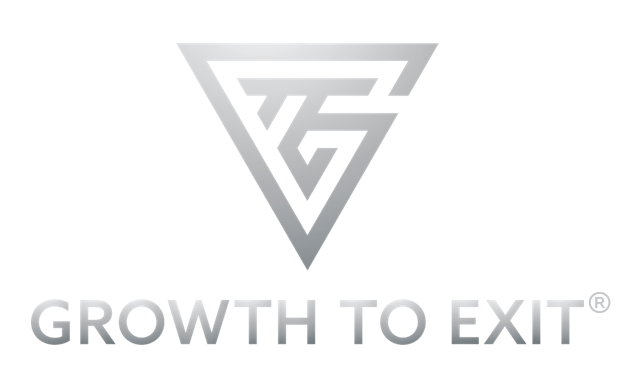Employee Buyout: When Employees Become Owners

In our previous Blog Post on Growth To Exit we discussed the importance of having a corporate succession plan in place, as well as the different selling options that you have as a business owner, if your kids do not want to buy your company. This time we will discuss an alternative strategy that you might wish to consider if you are planning to sell your business: the Employee Buyout.
More and more small and medium-sized companies are looking for a suitable successor, as baby boomer business owners plan to either retire or sell their business and start new ventures. One’s own employees are often not considered, but what would happen if the workforce itself becomes the owner of the business, and what would this process look like?
First of all, let’s look at what an Employee Buyout really is.
An employee or management buyout is the acquisition of all or a majority of the owner's shares in the company by one or more employees. The transfer of the shares can take place over time or at once, and the objective is to transfer a controlling participation to the former employees - new owners. This process should not be confused with an employee participation program, which is usually structured in such a way that employees can buy a limited number of shares, but are not given a say in the company. In addition to a monetary incentive, both of these strategies serve to increase the loyalty and involvement of employees with the company.
The employee buyout is an option that is usually overlooked by business owners, not because they do not have suitable and skilled employees to take over the company, but because they do not even think about it or have never discussed it with their staff. There are many real life examples however, of widely successful corporations that are employee-owned, both in the US and around the world: Publix Super Markets (the largest employee-owned company and fifth-largest privately held company in the US), Penmac Staffing, Brookshire Brothers, WinCo Foods and Robert W. Baird & Co are just some prime examples of how employee buyout can be highly successful, and even help take the company to the next level and leverage its status.
.
.
The Process
An employee buyout hardly differs from any other company sale. The only significant difference – which does not happen in every case – is if an employee buys your company, their previous work performance usually reduces your initial sales price. This is because the years of involvement and commitment of an employee in the company are taken into account in many evaluation procedures. Apart from this consideration, the same rules apply to an employee buyout and to a business sale to a non-company person.
Basically, this type of sale runs like any other business takeover: the business owner gets the company organized and ready for sale, then the company is valued by an external management consultant and the determined value forms the basis for the price negotiations. If an agreement is reached, the interested party assumes the company, as well as all tax liabilities from the current owner.
Employee or management buyouts are in fact a great option for small businesses and medium-sized companies with a few hundreds of employees. An essential key to success is a great management team as potential successors, such employees who have been with the company for several years and who have experience in the management of all important business functions, such as sales, customer service, production, technology, IT, finance, legal and more.

.
The Cooperative Model
The cooperative model is a sales approach, seriously considered by many business owners who choose to sell their company to a group of employees – especially those who have been involved with the company since day one and have helped building it from zero.
The transfer of the company follows the usual conditions of the establishment of the cooperative. At least three founding persons take over the company and are jointly responsible for its further economic success. Since the cooperative can bundle the financial responsibilities of several people involved, the financing of the purchase price is easier to realize.
In addition, the cooperative is solely and exclusively obliged to promote the interests of its members, while its business activities are oriented towards economic, cultural or social goals. The members are only liable for their shareholding, therefore, the individual capital risk is manageable, especially since most cooperatives also limit the distribution of membership shares to a small number of people. Upon leaving, the members are entitled to repayment of their business credit to the cooperative.
What makes the cooperative an even more appealing option is the fact that it provides great stability, secures entrepreneurial independence, excludes a takeover, and allows entries or exits unbureaucratically, at nominal value and without notary or company valuations. Moreover, the cooperative offers the departing entrepreneur the possibility of a gradual withdrawal, for example as a member of the supervisory board or as a consultant for the company in an employment relationship.
.
.
Financing Options for Employee Buyout
Many companies have all the key success factors for a successful employee buyout, but employee adoption is not considered in most cases. This is due to the assumption that the employees cannot afford the purchase price of the business.
Depending on the determined company value, there are numerous ways to finance an employee buyout, including senior liabilities in the form of subsidy programs, bank loans or seller loans, leasing, equity, and more. An experienced consultant will know the right sources, the best and most suitable financing strategies for an employee buyout that satisfy a company’s needs.
These financing solutions allow employees or management to buy the company, even if they do not have a lot of equity. Of course, those who are seriously considering buying a company must also make a monetary contribution in the form of equity, collateral or guarantees. However, this share must be meaningful and sustainable for employees and their families, as it serves to underline the commitment of the successors and to ensure an aligned interest of all parties involved.
For larger companies that require an equity partner, employees can negotiate long-term incentive programs, often referred to as earn-ups. This way, they can earn additional equity if they reach defined performance levels, and after several years (usually five or six years), if all goes well, they can buy the company and get a 100% stake.

.
Avoid the Biggest Mistake
The biggest and most common mistake in an employee buyout scenario that business owners make is choosing the wrong employee to take over the company. In many cases, a business owner confuses a good employee with a good entrepreneur. In other words, just because an employee has done a good job in your company for years, it does not mean that they are also suitable for corporate management.
For the management of a company, different skills and experience are usually required than for an employee position. In addition, if there are any conflicts with other, long-standing work employees, they might refuse to take orders and direction decisions from a former colleague.
Therefore, as an entrepreneur and business owner, you should definitely get external help when choosing a suitable successor, since a person outside the company can better assess whether an employee is suitable to become the new owner who will control the business you have built and continue your legacy. If you have already selected a suitable employee, you should also train him or her entrepreneurially and “test” them to see if they will be appropriate in running the company without you.
Another common mistake is the confusion of your ownership position in the company with your operational role in the company. Avoid this by creating a clear understanding of the governance structure and discussing how each owner will participate in future profits. This is crucial for the long-term health of the company and the new business partnership.

.
The Bottom Line
Corporate succession is a central problem in many small and medium-sized companies, especially when the children of business owners are not interested in taking over the business. Without a pre-designed, structured plan, unregulated, incorrect or late corporate successions can lead to the insolvency or liquidation of the company. But it does not have to come down to this, because often a clever succession solution is much closer than expected.
Unfortunately, in addition to the classic sale of the company to a third party, employee participation is often overlooked as a succession strategy, but facts have shown that this option can be highly successful.
Employee ownership can be a great way to pass a business on to the next generation and ensure that local ownership continues and jobs are preserved in local communities. Staff and management members that have demonstrated real leadership and possess relevant industry experience can become the key success factors for the transition of ownership of a business. Employee buyout is also a viable solution for entrepreneurs who want to retire, while ensuring that their legacy continues.
.
.

.
.


